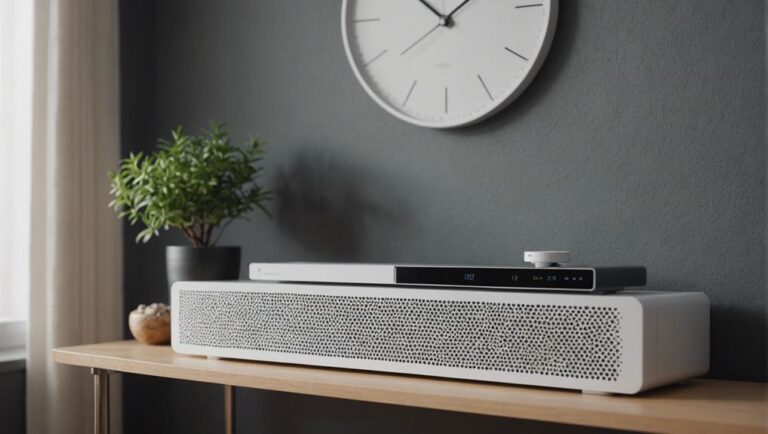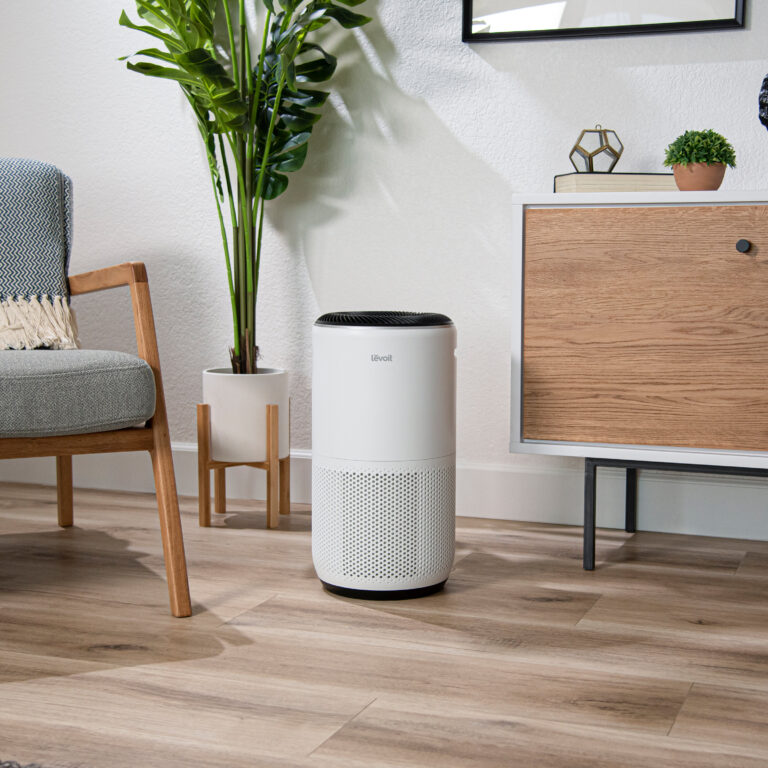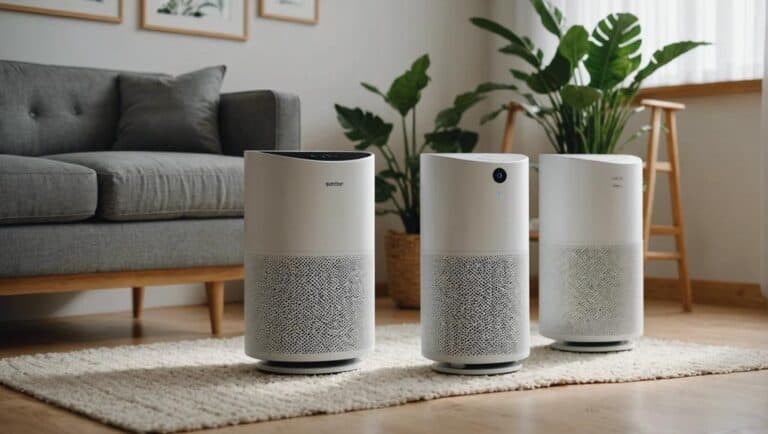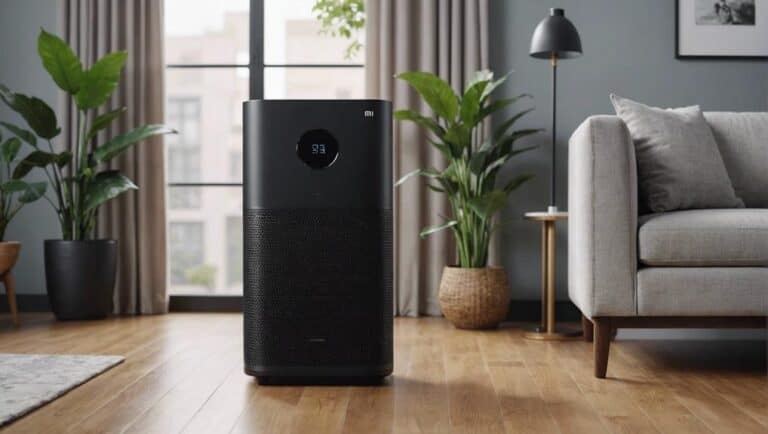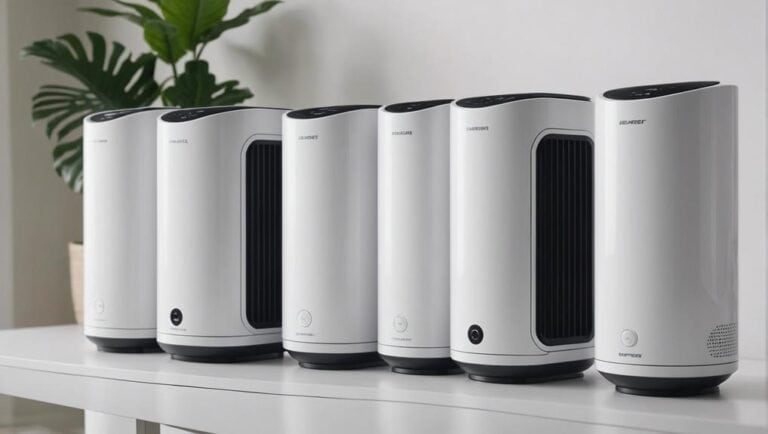Air Purifier vs. Air Scrubber: Understanding the Differences and Making an Informed Choice for Optimal Indoor Air Quality
Indoor air quality has become a pressing concern for many individuals and families, particularly with the increasing prevalence of respiratory issues and allergies. As a result, there has been a surge in the market for air purification devices that promise cleaner and healthier air within our homes and offices. Two popular options that often come up in this realm are air purifiers and air scrubbers.
While both aim to improve indoor air quality, understanding their differences is crucial in making an informed choice for optimal results. In this article, we will delve into the disparities between air purifiers and air scrubbers, examining their functionalities, effectiveness, and benefits.
By equipping ourselves with such knowledge, we can make a well-considered decision when it comes to achieving pristine indoor environments that promote health and wellness for ourselves and our loved ones.

How do Air Purifiers Work?
Air purifiers and air scrubbers are both devices designed to improve indoor air quality, but they work in slightly different ways. Air purifiers typically use a series of filters to remove airborne particles such as dust, pollen, pet dander, and mold spores from the surrounding air. These filters can vary in size and composition, with some models even including activated carbon or UV light technology to further enhance their effectiveness.
On the other hand, air scrubbers work by actively releasing charged ions into the air that attach themselves to pollutants such as bacteria, viruses, and volatile organic compounds (VOCs). Once attached to these particles, the charged ions make them heavier than the surrounding air. As a result, they fall out of suspension and are left behind on surfaces where they can be easily cleaned or removed.
Both technologies have their advantages depending on individual needs and circumstances. Air purifiers tend to be more effective at removing larger particulate matter from the air while also addressing odors through added filtration methods. Air scrubbers may excel at neutralizing smaller microorganisms like bacteria due to their ionization capabilities.
Ultimately it is important for individuals seeking cleaner indoor environments to carefully consider their specific requirements regarding particle sizes they want removed or microorganisms neutralized when choosing between an air purifier and an air scrubber.
How do Air Scrubbers Work?
Air scrubbers work by using a combination of filters and other technologies to remove pollutants, allergens, and contaminants from the air. They are typically installed within HVAC systems or used as standalone units in larger spaces. Air scrubbers utilize pre-filters to capture larger particles such as dust and hair, while more advanced filters like HEPA (High-Efficiency Particulate Air) filters capture smaller particles including pollen, pet dander, mold spores, and bacteria.
In addition to filtration, air scrubbers often incorporate additional technologies such as activated carbon filters or UV germicidal lamps. Activated carbon helps absorb odors and chemicals that may be present in the air, while UV germicidal lamps kill airborne pathogens like viruses and bacteria.
Overall, air scrubbers not only help improve indoor air quality by reducing levels of harmful particulates but also enhance general cleanliness by combating unpleasant odors. However, it is important to note that proper maintenance is essential for optimal performance; regular filter replacements or cleaning are necessary to ensure continued efficiency.
Understanding how air purifiers versus air scrubbers work can help individuals choose the most suitable option for their specific needs. While both serve similar purposes of improving indoor air quality, each has different features that cater to various situations. By carefully considering factors such as room size, types of pollutants present in the environment (such as chemical fumes or biological agents), budget constraints, and personal preferences regarding noise level and maintenance requirements, it becomes possible to make an informed choice between these two options.
Key Differences between Air Purifiers and Air Scrubbers
Air purifiers and air scrubbers are both designed to improve indoor air quality, but there are key differences between the two. Air purifiers work by using filters or other technologies to remove contaminants such as dust, pollen, pet dander, and mold spores from the air. They trap these particles in their filters, preventing them from circulating back into the room. Some advanced models can even capture smaller particles like bacteria and viruses.
On the other hand, air scrubbers use a different approach to clean the air. Instead of just filtering out pollutants, they actively eliminate them by releasing negative ions that attach themselves to airborne particles. This causes these particulates to become heavier and fall out of suspension so that they can be easily cleaned up or vacuumed away.
The main difference between these two systems is how they handle pollutants in the air – while an air purifier removes them through filtration, an air scrubber neutralizes them by causing them to drop out of circulation. Depending on specific needs and concerns regarding indoor pollution sources (e. g., allergies versus smoke), individuals may find one option more suitable than another for improving their indoor environment.
Benefits of Air Purifiers
Air purifiers offer a range of benefits that contribute to improved indoor air quality. Firstly, they effectively remove harmful particles and pollutants from the air, such as dust, pollen, pet dander, mold spores, and even bacteria or viruses. This is especially beneficial for individuals with respiratory issues or allergies as it can help alleviate symptoms and reduce the risk of exacerbation.
Furthermore, air purifiers can enhance overall health and well-being by creating a cleaner environment. By filtering out airborne contaminants, they minimize exposure to potentially harmful substances and improve respiratory function. Cleaner air also means less likelihood of inhaling toxins or irritants that may lead to long-term health problems.
Additionally, air purifiers aid in eliminating odors from the indoor environment. They are particularly effective at reducing unwanted smells associated with cooking food, pets’ presence or general mustiness. This not only improves comfort but also provides a more pleasant living atmosphere for occupants.
Overall, investing in an air purifier can significantly improve indoor air quality by removing allergens and pollutants while promoting better health outcomes for individuals exposed to these environments on a daily basis.
Benefits of Air Scrubbers
Air scrubbers offer several benefits when it comes to improving indoor air quality. One of the key advantages is their ability to eliminate a wide range of pollutants and contaminants from the air. These can include dust, pollen, mold spores, pet dander, bacteria, viruses, and volatile organic compounds (VOCs). By removing these particles from the air, air scrubbers help reduce respiratory issues and allergies that are triggered by these substances.
Another benefit of using air scrubbers is their ability to control odors. They work by trapping odor-causing molecules in filters or through chemical reactions within the device itself. This can be particularly useful for those who have pets or live in areas with high pollution levels. Air scrubbers not only improve indoor air quality but also make our living spaces more pleasant by eliminating unpleasant smells.
Additionally, air scrubbers can help prevent the spread of airborne diseases. By capturing pathogens such as bacteria and viruses from breathing zones, they minimize the risk of infections like colds or flu being transmitted between individuals in enclosed spaces. This makes them especially valuable in settings such as hospitals and schools where there is a higher likelihood of exposure to airborne pathogens.
In conclusion, investing in an air scrubber can provide numerous benefits for achieving optimal indoor air quality. Their ability to remove various types of pollutants and contaminants, control odors, and decrease the transmission of airborne diseases make them a valuable addition to any home or office space concerned about maintaining clean and healthy indoor environments.
Factors to Consider when Choosing between Air Purifiers and Air Scrubbers
When it comes to choosing between air purifiers and air scrubbers, there are several factors that need to be considered. First and foremost, it is essential to understand the specific needs and requirements of your indoor environment. Air purifiers are generally designed to remove various airborne pollutants such as dust, pollen, pet dander, and mold spores. On the other hand, air scrubbers primarily focus on reducing volatile organic compounds (VOCs), odors, or chemicals in the air.
Another crucial factor to consider is the size of the space you want to clean. Air purifiers are suitable for smaller rooms or specific areas within a larger space since they typically have limited coverage area. However, if you need to improve the overall indoor air quality in a large commercial building or an entire home with duct systems, then an air scrubber might be a more appropriate choice as they can handle larger volumes of air.
Lastly, cost and maintenance should also be taken into account. While both devices require filter replacements over time, some models may require more frequent filter changes than others. Additionally, initial purchase costs can vary significantly depending on brand reputation and features offered by each device.
By considering factors such as specific needs, room size requirements, and overall costs associated with both options -air purifiers vs. air scrubbers- individuals can make informed choices regarding which device best suits their preferences for optimal indoor air quality improvement.
Case Studies: Real-Life Examples of Air Purifier and Air Scrubber Usage
Air purifiers and air scrubbers have been widely used in various real-life scenarios to improve indoor air quality. One case study involves a family who experienced persistent respiratory issues, including asthma and allergies. After extensive research, they decided to invest in an air purifier that utilizes HEPA filtration technology. The device effectively captured airborne allergens and pollutants, providing noticeable relief for the family members’ respiratory symptoms.
In another case, an office building faced challenges with poor indoor air quality due to the presence of volatile organic compounds (VOCs) from renovation materials. To address this issue, an air scrubber was installed on-site. The air scrubber utilized advanced activated carbon filters to adsorb VOCs and eliminate odors effectively. As a result, staff reported improved productivity levels and reduced instances of headaches or irritation related to poor air quality.
These real-life examples illustrate how both air purifiers and air scrubbers can be beneficial in specific situations for improving indoor air quality. Ultimately, understanding the differences between these devices is vital in selecting the most suitable option for optimal results based on specific needs and circumstances.
Conclusion: Making an Informed Choice for Optimal Indoor Air Quality
In conclusion, when it comes to choosing between an air purifier and an air scrubber for optimal indoor air quality, it is important to consider the specific needs of your environment. Air purifiers are designed to remove particles such as dust, pollen, and pet dander from the air, making them ideal for individuals with allergies or asthma. They use filters or technology like UV-C light to trap and eliminate these contaminants.
On the other hand, air scrubbers are more effective in tackling odors and chemical pollutants in the air. They work by producing charged ions that bind with airborne particles and neutralize them. This makes air scrubbers a preferred choice in environments where smoke or volatile organic compounds (VOCs) are present.
Ultimately, making an informed choice requires understanding your specific indoor air quality requirements and consulting with experts who can guide you towards the best solution for your needs. It may also be beneficial to consider factors such as maintenance costs, noise levels, energy consumption, and warranty coverage when comparing different models of both air purifiers and air scrubbers. By taking these factors into account and considering individual circumstances like allergies or respiratory conditions within your household or office space, you can make a well-informed decision regarding which device will provide optimal indoor air quality for your environment.

